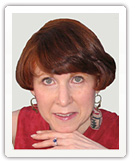E-Alerts: Organizational Effectiveness Archives
A New Look At Succession Planning: Tthe Next Big Thing?
June 2004
Why are most organizations so lax about succession planning – one of the most critical concerns for business continuity? Think about it: even if there is never a terrorism episode or threat, even if there is no large technology glitch or crisis, there will always be a need to pass the baton of firm or practice or client relationship leadership. Yet most firms, particularly in the professional services, where client relationships are the most important factor in the business, often do not deal with client succession planning until the need is staring them in the face. The need to move quickly may preclude making a well thought out decision and transition plan. Lack of foresight on succession can lead to costly business disruptions.
In a recent interview in the Wall Street Journal, Susan M. Gianinno, Chairman and Chief Executive of Publicis Groupe SA's Publicis USA, an advertising firm, talked about her approach to picking a successor for herself and why firms typically neglected this crucial activity. Her views are applicable to other professions and service businesses and to client succession planning as well as firm leadership succession.
Speaking of the advertising industry, Ms. Gianinno said, “A lot of people don't want to deal with the fact that they won't be here forever. I think they aren't confident in themselves, and I think it's about them being insecure.... I don't think they trust those under them. This is a very ego-driven business. There isn't a lot of mentoring in our industry, and it's a big issue.” Of herself, she says “I have a responsibility to make sure the future of this business is secure.” So she started a search for her successor three to five years before she plans to step down. She has chosen and anointed a president and chief executive for Publicis New York and is planning her exit.
Reasons For Lack Of Planning
In addition to the explanation for resistance given by Ms. Gianinno – ego, insecurity, trust issues – there are other reasons that have kept firms from getting adequately prepared for succession situations, particularly regarding key client relationship succession. Foremost among them are:
- People don't want to acknowledge that crises will occur leading to significant losses of talent and revenue. This is painful.
- Compensation policies in many organizations don't address leadership of client teams or practice groups except in rewards for initially bringing in the business. New compensation policies are needed, and facing the relevant issues can lead to tense and difficult discussions, particularly if not facilitated by a neutral with no vested interests.
- There is inadequate communication among personnel who deliver services - the entire service team - whether owing to time pressures, personal style, or trust issues.
- Given the reasons above, firm governance policies haven't put needed processes into play. Situations are handled - or ignored - on an ad hoc basis so as not to rock the boat. No doubt, these usually are sensitive issues. But they are even more sticky with no overall policy and process in place to follow when circumstances arise, anticipated or unanticipated.
A greater sense of urgency and education is needed. I'll start the forward motion with 10 principles as a foundation of planning.
Recommended Principles For Succession Planning
- Necessary leadership attributes change with circumstances. Align succession plans and business goals and review them periodically.
- Balance timing: enough lead time, but don't drag the process and transition on, producing the lame duck syndrome.
- Try to keep personalities out of the selection process and discussions and focus on the benefits to the clients.
- Take the opportunity to assess client service and make enhancements.
- Focus on the successor's strengths rather than weaknesses and build a team that complements those strengths.
- To maximize stability, think about the "unpredictable" and how to handle such situations.
- Identify significant future roles for the person being "succeeded" if they will remain in the organization.
- Create a sense of urgency to make succession plans by tying it into business continuity and resiliency concerns and plans.
- Recognize that succession planning is not a one-time event, but rather an ongoing process.
- Succession policies can be a focal point for positive institutional change.
Succession planning is actually the very essence of business continuity and resilience. Any instance in which a client or customer relationship can be lost is a business disruption and a significant threat to revenues and the delivery of services. In a professional firm or service business, it can mean the difference between survival or not.
How can we create more of a sense of urgency on this issue? Please share your thoughts.
Studies show that coaching increases skill development by 88%! Explore your, or your colleagues', needs for bringing in more business, navigating firm culture or other workplace issues in a confidential, free interview with Phyllis by calling 212-593-1549.
Ask about our new programs, *Capitalizing on Your Personal Style* and *Get a Seat at the Table* See www.pdcounsel.com
We welcome and encourage your comments to pwhaserot@pdcounsel.com
© Phyllis Weiss Haserot, 2004. All rights reserved.

